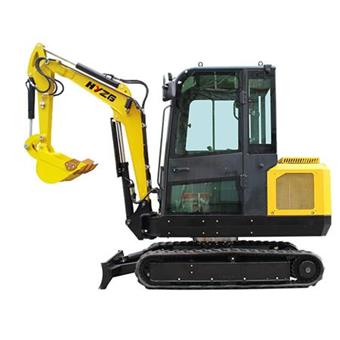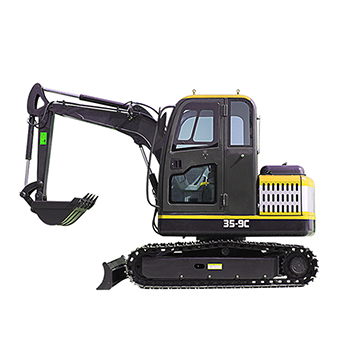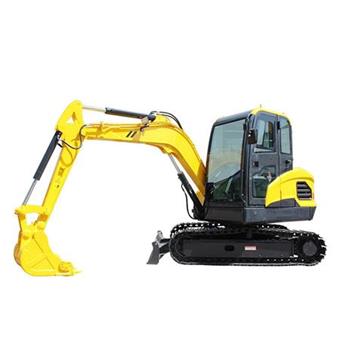
Nachrichten
In the ever-expanding world of infrastructure, mining, and construction, giant excavators are the true titans of progress. Towering over their smaller counterparts, these heavy-duty machines can move mountains—literally. But one question often intrigues investors, contractors, and curious observers alike: How much does a giant excavator cost?
Understanding the cost involves more than a single price tag—it includes brand reputation, model capabilities, size, and advanced technology integrations. In this article, we break down everything you need to know about giant excavator prices, operating costs, and what makes them worth every penny.
What Defines a “Giant Excavator”?
A giant excavator typically refers to an ultra-large hydraulic machine designed for heavy-duty digging, mining, and large-scale earthmoving operations. These machines are used in:
Open-pit mining
Major construction projects
Dams and infrastructure development
Quarrying and bulk material movement
Size and Power
Unlike standard excavators that weigh between 10–50 tons, giant excavators can weigh anywhere from 100 to over 1,000 tons, with bucket capacities exceeding 30 cubic meters. The engines often produce more than 3,000 horsepower, allowing them to dig and lift massive quantities of earth efficiently.
When determining how much a giant excavator costs, prices can vary dramatically based on brand, specifications, and functionality.
Average Cost Range
Mid-range large excavators (100–300 tons): $500,000 – $1.5 million
Ultra-large mining excavators (300–800 tons): $1.5 million – $5 million
Super-giant models (above 800 tons): $5 million – $15 million or more
Some customized mining excavators designed for extreme conditions can surpass $20 million, depending on added technology, automation, and safety systems.
Caterpillar is an undisputed leader in the heavy machinery sector. Its CAT 6090 FS, weighing over 1,000 tons, is among the largest hydraulic excavators in the world.
Approximate cost: $11–13 million
Bucket capacity: Up to 52 cubic meters
Engine output: 4,500 HP
The Komatsu PC8000-6 is another mammoth excavator widely used in mining.
Approximate cost: $10–12 million
Weight: 750 tons
Power: 3,500 HP
Liebherr’s R9800 is famous for its efficiency and fuel economy.
Approximate cost: $10 million
Bucket capacity: 47 cubic meters
Usage: Widely adopted in global coal and iron mining
The Hitachi EX8000-7 is known for its smooth operation and cutting-edge technology.
Approximate cost: $9–11 million
Power: 3,880 HP
Special feature: Hybrid hydraulic systems
Bigger buckets, stronger booms, and heavier structures naturally raise the price tag.
Modern excavators use advanced telematics, GPS guidance, and semi-autonomous systems.
Electric and hybrid systems, while costlier upfront, offer significant long-term savings.
Premium brands like Caterpillar, Komatsu, and Liebherr charge more but offer unmatched durability and global service networks.
Special attachments, such as rock crushers, long arms, or demolition booms, can significantly increase costs.
Buying the machine is just the beginning. Understanding total cost of ownership (TCO) helps businesses budget effectively.
Cost Breakdown
Initial purchase price – Up to $15 million
Shipping and import fees – 5–10% of total price
Operator training and certification – $10,000 – $25,000
Annual maintenance and fuel – $100,000 – $300,000
Spare parts and servicing – 3–5% of purchase cost annually
Over a 10-year lifespan, owning a giant excavator could total $20–25 million when all operational expenses are considered.
Many companies prefer leasing rather than purchasing outright.
Advantages of Leasing:
Lower upfront cost
Easier upgrades to newer models
Tax-deductible expenses
Simplified maintenance contracts
However, for large mining corporations, purchasing remains more economical long-term, especially for high-use applications.
As sustainability becomes a global priority, manufacturers are developing eco-friendly excavators that reduce emissions and improve energy efficiency.
Hybrid excavators consume up to 30% less fuel.
Electric models are emerging, ideal for operations with a consistent power supply.
Emission-compliant engines meet Tier 4 and Stage V standards.
These innovations may increase initial costs but significantly reduce lifetime operational expenses.
Rental costs vary by region but typically range from $10,000 to $40,000 per month, depending on size and availability.
The Caterpillar 6090 FS holds the title, with a price exceeding $13 million.
With proper maintenance, these machines can operate effectively for 15–20 years or more.
Depending on the workload, expect 400–800 liters of diesel per day.
Not entirely—electric excavators are growing in popularity for medium-scale projects, but are still limited for ultra-large models.
So, how much does a giant excavator cost? The answer depends on the scale of ambition, type of operation, and chosen brand. Whether priced at $1 million or $15 million, these machines are monumental investments that redefine productivity and efficiency in the construction and mining world.
For developers, contractors, and mining enterprises, the key is to balance upfront costs with long-term performance and reliability. After all, when it comes to moving mountains—literally—only a giant excavator can deliver that level of power and precision.
Vorherige: Wie viel kostet ein chinesischer Minibagger?
Nächste: Wie viel kostet ein Hydrobagger?



